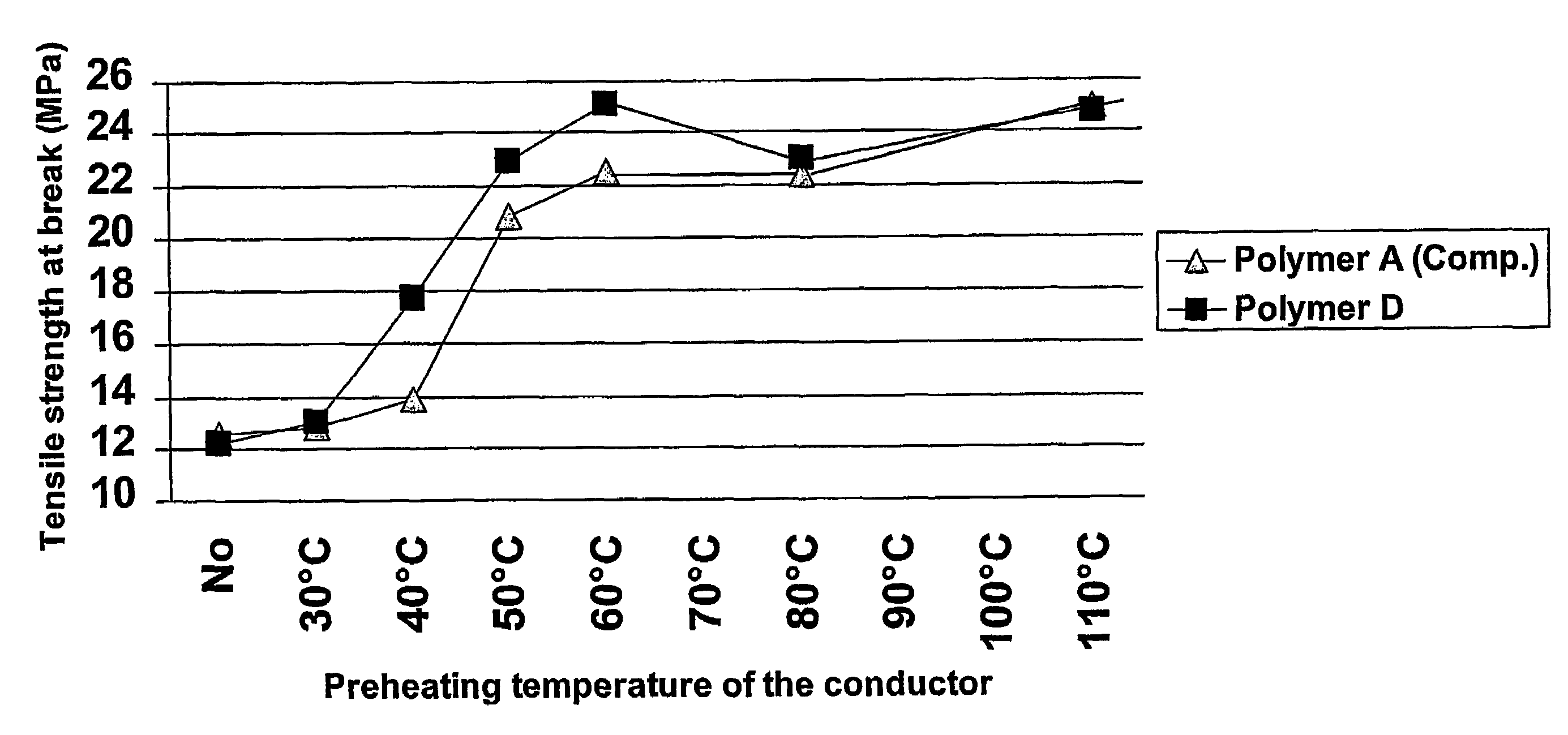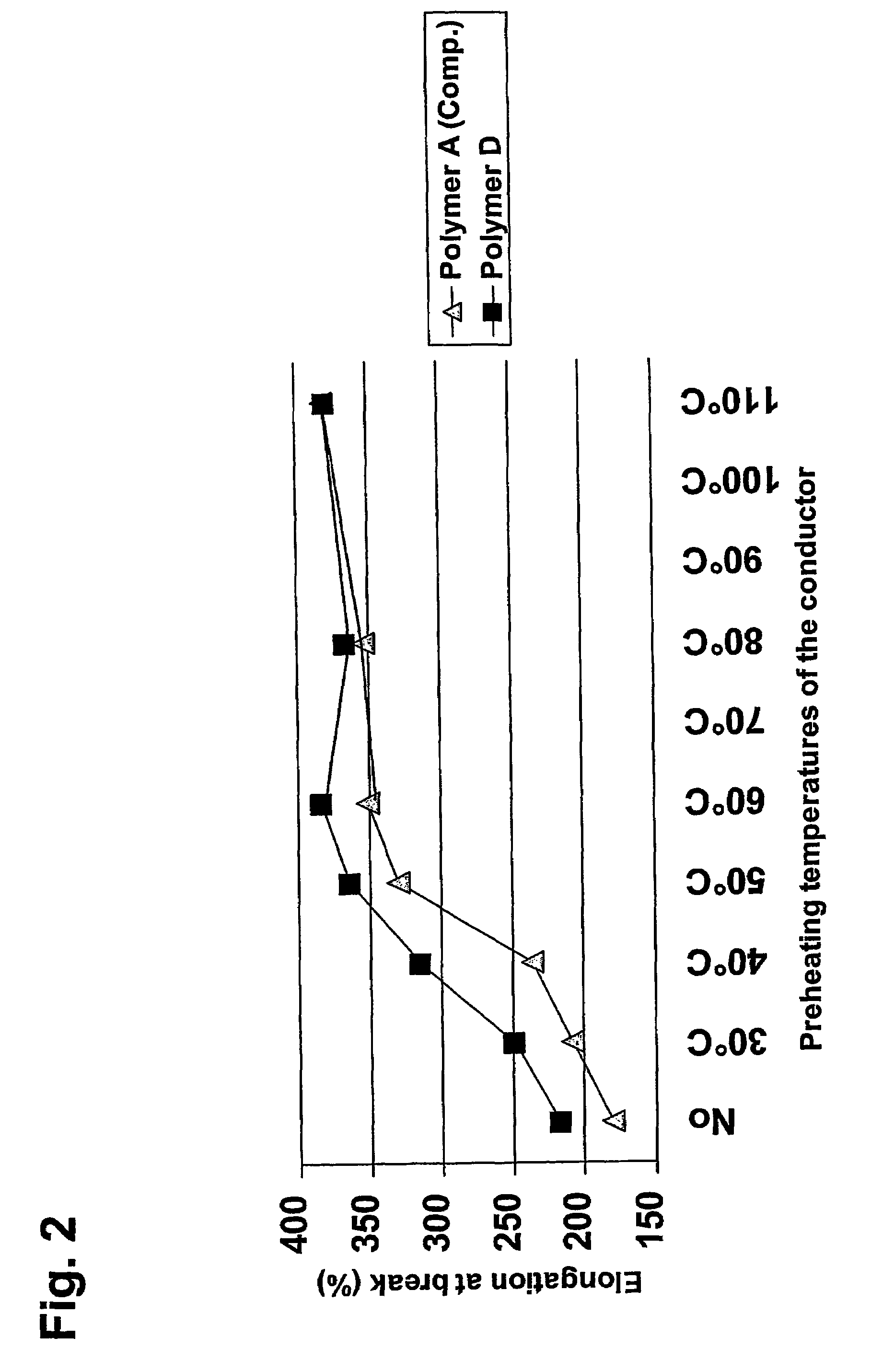Low voltage power cable with insulation layer comprising polyolefin having polar groups, hydrolysable silane groups, and including a silanol condensation catalyst
a technology of low voltage power cable and silanol condensation catalyst, which is applied in the direction of power cables, plastic/resin/waxes insulators, organic insulators, etc., can solve the problems of damage to the insulation layer of the cable, and achieve the effect of improving the adhesion to polyurethane polymers, preventing such breaks, and improving the elongation at break
- Summary
- Abstract
- Description
- Claims
- Application Information
AI Technical Summary
Benefits of technology
Problems solved by technology
Method used
Image
Examples
examples
1. Compositions Used for Production of Insulation Layers
[0060]a) Polymer A (comparative) is a ethylene copolymer containing 0.23 mol % (1.25 wt %) of vinyltrimethoxysilane (VTMS), which has been obtained by free radical copolymerisation of ethylene monomers and VTMS comonomers. Polymer A has a density of 922 kg / m3 and an MFR2 (190° C., 2.16 kg) of 1.00 g / 10 min.
[0061]b) Polymer B (comparative) is a ethylene copolymer containing 0.25 mol % (1.3 wt %) of vinyltrimethoxysilane (VTMS), which has been obtained in the same way as polymer A. Polymer B has a density of 925 kg / m3 and an MFR2 (190° C., 2.16 kg) of 1.1 g / 10 min.
[0062]c) Polymer C is a ethylene copolymer containing 0.25 mol % (1.3 wt %) of vinyltrimethoxysilane (VTMS) and 0.33 mol % (1.5 wt %) of butyl acrylate (BA), which has been obtained in the same way as polymer A, except that during polymerisation butylacrylate comonomers were added. Polymer C has a density of 925 kg / m3 and an MFR2 (190° C., 2.16 kg) of 0.9 g / 10 min.
[0063...
PUM
| Property | Measurement | Unit |
|---|---|---|
| density | aaaaa | aaaaa |
| thickness | aaaaa | aaaaa |
| temperature | aaaaa | aaaaa |
Abstract
Description
Claims
Application Information
 Login to View More
Login to View More - R&D
- Intellectual Property
- Life Sciences
- Materials
- Tech Scout
- Unparalleled Data Quality
- Higher Quality Content
- 60% Fewer Hallucinations
Browse by: Latest US Patents, China's latest patents, Technical Efficacy Thesaurus, Application Domain, Technology Topic, Popular Technical Reports.
© 2025 PatSnap. All rights reserved.Legal|Privacy policy|Modern Slavery Act Transparency Statement|Sitemap|About US| Contact US: help@patsnap.com



